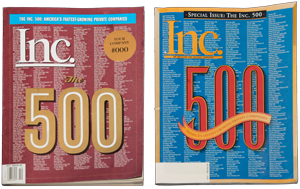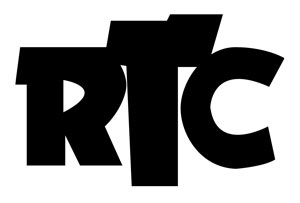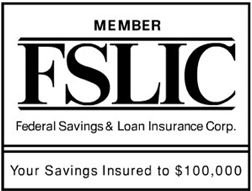Historical Time Line
Multiplying Growth

Inc. Magazine consecutively recognizes Univest as one of America 500 fastest growing privately held companies. UFGI separates its business into three distinct companies, and sells two of them.UFGI separates its business into three distinct companies: Univest Financial Services, an underwriting and due diligence firm, Univest Financial Group, an information management services firm serving the regulatory markets, and Univest Holdings, LLC, an investment holding company.
Univest sells Univest Financial Services to a private investor group. This group eventually sold the company to General Motors Acceptance Corporation (GMAC). Currently, the company is owned by a joint venture between Mortgage Ramp and GMAC.
Univest sells Univest Financial Group to a private investor group. It is currently owned by Midland Financial (a unit of PNC Bank).
Univest Holdings, Inc. and Univest Investments, Inc. are formed.Univest Holdings, Inc. (UH), along with its capital partner, Univest Investments, Inc. (UII) teamed up with its former CFO, Mike Boschetti, President of Small Forest Holdings, LLC, and the principals of Cartel Realty, Inc., a commercial real estate brokerage and management company, to acquire strategic private equities and commercial real estate properties. Through UH and UII these companies have assembled an unparalleled amount of MBS industry knowledge.
Univest partnered with the largest privately owned pest control company in Georgia.Univest’s partnership with Georgia’s largest privately owned pest control company led them to form Arrow Services, LLC for the purpose of completing a roll-up strategy in the extermination and termite control industry. Univest and its partners successfully restructured the company and positioned it for future acquisitions to complete our roll-up strategy and create a third brand name in the public market. Subsequently, Univest sold the company providing a 100 percent internal rate of return (IRR) on its investment.
Univest Holdings, along with its capital partner, Univest Investments, continues to acquire and develop commercial realestate projects.
UNIVEST RTC & FSLIC

RTC awards Univest the contract to manage the RTC’s Central Loan Database. Resolution Trust Corporation (RTC) is formed. Univest recommends that the agency apply full due diligence for all portfolios brought to market and create a national standard for all contractors to follow.
Standardization makes it possible for the RTC to optimize its sales through securitization. Univest’s index of residential data elements and due diligence codes was adopted as the core of the work requirement for the RTC’s Atlanta Pilot Program.
Univest performs analysis, evaluation and transaction-delivery support services on over $25 billion in residential, commercial real estate and multifamily and consumer loan portfolios for the RTC and FDIC in over 65 separate projects.The firm is one of two companies qualified to perform due diligence nationally for the FDIC’s Mortgage Sales and Servicing Unit. The standardization of due diligence data elements enables the RTC to pursue creating a consolidated centralized loan database to support the securitization effort.
RTC awards Univest the contract to manage the RTC’s Central Loan Database, which served as the backbone of the RTC’s National Loan Marketing Effort.Despite the fact that Univest was competing with industry giants IBM and EDS, Univest’s experience and success with the FSLIC and Fannie Mae proved advantageous when Univest was awarded a contract with the RTC.Through Univest, the RTC data was housed on Univest systems in its Little Rock, AR Operations Center. In addition, Univest managed the performance of all outstanding RTC securities through a separate awarded contract and had the responsibility for reporting to Wall Street, the RTC, and all outstanding RTC security investors. The RTC adopted the national standard for residential due diligence using Univest’s methodology as a source document.
“Univest’s role involved translating information from many services into a standardized format. Afterwards, the loans could be structured into pools for the RTC’s various sales programs, including MBS and bulk deals.”
Using Univest’s hardware, software and analysts, the RTC project involved the accurate completion of millions of records and the curing of more than 100 billion dollars in assets.
Inc. Magazine consecutively recognizes Univest as one of America’s 500 fastest growing privately held companies.In 1992, Inc. Magazine recognized Univest as the 450th fastest growing private company. Just one year later, the 1993 Inc. Magazine moved Univest up to 189th with sales of $29.8 million -all while maintaining its “A” profitability rating.
A+ DUE DILLIGENCE

Early in 1987, Univest was awarded its first regulatory-related due diligence project by the FSLIC.FSLIC awards Univest its first regulatory-related due diligence project. In early 1987, Univest was awarded its first regulatory-related due diligence project by the FSLIC. Univest recommended a liquidation strategy for receivership portfolios based on 100% due diligence and a mark-to-market valuation model that supported the agency’s pricing targets. Since both the seller and the purchaser were fully knowledgeable as to the quality of the assets offered, subsequent sales were consistently and significantly higher than the sales relaying on zero or random sample due diligence.
Univest becomes a leading contractor for the FSLIC, performing on over 30,000 loans over a two-and-a-half year period.Due to the success of such a strong due diligence approach, Univest became a leading contractor with the FSLIC. Univest serviced the FSLIC with the operations and liquidations divisions which sought to salvage the savings and loan institutions that were without hope.
 Univest and Fannie Mae consummate the first agency transaction involving a regulatory-controlled portfolio. Univest’s success with the FSLIC bridged a trusting relationship with Fannie Mae. Fannie Mae required specific solutions that Univest could proudly meet through their quantitative methodologies and experience.
Univest and Fannie Mae consummate the first agency transaction involving a regulatory-controlled portfolio. Univest’s success with the FSLIC bridged a trusting relationship with Fannie Mae. Fannie Mae required specific solutions that Univest could proudly meet through their quantitative methodologies and experience.Several investor groups involved in the acquisition of failed thrifts retain Univest to perform due diligence and mark-to-market analysis to settle regulatory assistance agreements and for purchase accounting. The results of Univest’s Market Pricer (mark-to-market) Model are reviewed and successfully defended before accounting and investment banking firms, and the government agencies. Valuations by Univest enable the transfer of more than $2.5 billion in loans. Acquirers of institutions utilizing Univest’s due diligence and mark-to-market methodology included AmericaFirst Financial Corporation in its acquisition of Eureka Federal Savings; First Nationwide Bank in its acquisition of Columbia-Silverado Savings; an investor group in its acquisition of Olney Savings (now AmWest Bank) and eleven other thrifts. For these transactions, Univest priced a total of 30,000 residential, consumer and commercial loans, providing updates as needed.
UNIVEST BEGINNINGS
Founded in 1985, Univest has a rich heritage and successful track record that serves as the foundation of our current success. Our investment approach today leverages our understanding of asset valuation and value creation that has been developed over the last 20 years.
Univest has a rich heritage and successful track record that serves as the foundation of our current success.While serving as the chief whole loan trader for E.F. Hutton Mortgage Corporation, Ric Tomlinson leads a group of EF Hutton employees to execute a management buyout of Hutton’s mortgage business to form Univest Financial Group, Inc.
When E.F. Hutton and Co. merged with Shearson Lehman to form Shearson Lehman Hutton, the company decided to move its mortgage banking operation to New York’s Wall Street. Ric Tomlinson, then a senior officer of the mortgage and thrift division for E.F. Hutton, felt that such a move would not be in the best interest of Hutton’s mortgage banking division located, at that time, in Little Rock, Arkansas.
Hutton was positioned at the forefront of MBS development. Surprisingly, Tomlinson decided not to move with the newly merged company, knowing his entrepreneurial desires were calling him to aquire and grow Hutton’s mortgage finance operation.
“I thought about it,” said Tomlinson, “and the more I thought, the more I decided against New York, and for the purchase of Hutton’s mortgage finance operations in Little Rock.”
In Little Rock, Tomlinson, two of his colleagues and an investor group purchased E.F. Hutton Mortgage Corp. and formed a mortgage finance investment and consulting company, and called it Univest Financial Group, Inc. By acquiring the physical assets of E.F. Hutton’s mortgage corporation, Univest assumed the “back office” operations of its mortgage banking division. In the first six months of Univest’s start-up period, the company obtained a $50 million warehouse line of credit from Chemical Bank of New York. Univest continued to purchase whole loans as principal as well as using various exit strategies such as repackaging and securitization.
 Univest creates proprietary, cutting-edge pricing models providing clients with a sound quantitative methodology to profile risk and value non-standard mortgage portfolios, particularly those with diverse adjustable rate features.Univest created methodologies for evaluating adjustable rate loans, performing sophisticated bulk mortgage loan mark-to-market valuations and detailed due diligence systems. These methodologies would allow for efficient gathering and collection of vital secondary market-required data. This data defined the marketplace by using a software technology that mainstreamed future mortgage banking, secondary market transaction criteria, and included the secondary market quasi-governmental agencies of “Freddie Mac” and “Fannie Mae”, as well as the FSLIC and the RTC.
Univest creates proprietary, cutting-edge pricing models providing clients with a sound quantitative methodology to profile risk and value non-standard mortgage portfolios, particularly those with diverse adjustable rate features.Univest created methodologies for evaluating adjustable rate loans, performing sophisticated bulk mortgage loan mark-to-market valuations and detailed due diligence systems. These methodologies would allow for efficient gathering and collection of vital secondary market-required data. This data defined the marketplace by using a software technology that mainstreamed future mortgage banking, secondary market transaction criteria, and included the secondary market quasi-governmental agencies of “Freddie Mac” and “Fannie Mae”, as well as the FSLIC and the RTC.The system was known as the Mortgage Portfolio Analysis System (MORPAS), and with this technology, Univest was able to audit, analyze and evaluate residential and commercial portfolios and structure secondary market transactions.
MORPAS was recognized as the most advanced system in the mortgage industry at the time. It was utilized for portfolio liquidations, mergers and acquisitions, asset restructures, whole loan sales, securitizations, structured financing and other evolving industry activities.
With this technology, Univest’s solutions enabled clients to insure the accurate completion of asset records and the subsequent curing of those records. Univest’s solutions proved to be a more effective and less expensive alternative to then current industry standards for risk assessment and valuation standards.
Such technology and forethought allowed client companies to operate with decisiveness and confidence in resolving issues of quality measurement, cost efficiencies, pricing evaluations and risk management. Univest created these methodologies for collecting and transcribing large volumes of previously non-computerized yet highly specialized data at the client source.
Based on this business concept for driving transactions, Univest pioneered the idea that a successful transaction must reflect the proper relationship of the quality of the product with the market-derived pricing.
Univest mortgage specialists’ consummate over one hundred individual transactions for financial companies, thrifts, mortgage originators and its own account.Univest’s mortgage pricing models facilitated these transactions which provided clients with a sound quantitative methodology to profile risk and value non-standard mortgage portfolios, particularly those with diverse adjustable rate features.
